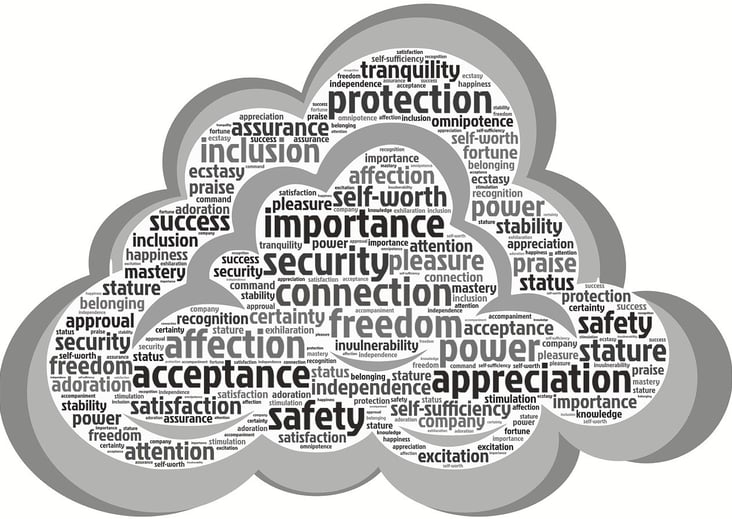Cybersecurity in the Cloud: Best Practices for Securing Cloud Environments
The adoption of cloud computing has revolutionized how businesses operate, offering unparalleled flexibility, scalability, and cost savings. However, with these benefits come new cybersecurity challenges. As more sensitive data and critical applications move to the cloud, securing cloud environments has become a top priority. This blog explores best practices for securing cloud environments to protect against emerging threats and vulnerabilities.
CLOUD SECURITY
6/10/20243 min read


Understanding Cloud Security
Cloud security encompasses the technologies, policies, controls, and services used to protect data, applications, and infrastructure in cloud computing environments. Cloud security is a shared responsibility between cloud service providers (CSPs) and customers. While CSPs are responsible for securing the cloud infrastructure, customers are responsible for securing their data and applications within the cloud.
Best Practices for Securing Cloud Environments
Understand the Shared Responsibility Model
Cloud Service Provider Responsibilities: CSPs typically secure the physical infrastructure, network, and hypervisor layer.
Customer Responsibilities: Customers must secure their data, applications, operating systems, and any additional cloud configurations. Understanding the delineation of responsibilities is crucial for effective cloud security.
Implement Strong Identity and Access Management (IAM)
Least Privilege Principle: Ensure that users have the minimum access necessary to perform their tasks. Regularly review and adjust permissions.
Multi-Factor Authentication (MFA): Require MFA for accessing cloud resources to add an extra layer of security.
Single Sign-On (SSO): Implement SSO solutions to simplify and secure user access across multiple cloud services.
Encrypt Data at Rest and in Transit
Data at Rest: Use strong encryption methods to protect data stored in the cloud. Ensure encryption keys are securely managed.
Data in Transit: Use TLS/SSL encryption for data transmitted between your on-premises infrastructure and the cloud, and between cloud services.
Regularly Update and Patch Systems
Automated Updates: Enable automated updates for cloud services where possible to ensure that systems are always protected against the latest vulnerabilities.
Patch Management: Develop and implement a patch management strategy for applications and operating systems running in the cloud.
Monitor and Log Cloud Activity
Cloud Monitoring: Use cloud-native monitoring tools and third-party solutions to continuously monitor cloud activity for anomalies and potential security incidents.
Logging and Auditing: Enable comprehensive logging and auditing of cloud activities. Regularly review logs to detect suspicious behavior.
Implement Network Security Controls
Virtual Private Cloud (VPC): Use VPCs to create isolated network environments within the cloud.
Firewalls and Security Groups: Implement firewalls and security groups to control inbound and outbound traffic to and from cloud resources.
Network Segmentation: Segment your network to limit the movement of attackers within your cloud environment.
Ensure Data Backup and Recovery
Regular Backups: Regularly back up critical data and store backups in separate, secure locations.
Disaster Recovery Plan: Develop and test a disaster recovery plan to ensure quick recovery from data loss or other catastrophic events.
Conduct Regular Security Assessments
Penetration Testing: Regularly conduct penetration testing to identify and address vulnerabilities in your cloud environment.
Vulnerability Scanning: Use automated tools to scan for and remediate vulnerabilities on a continuous basis.
Establish Strong Security Policies and Procedures
Security Policies: Develop comprehensive security policies tailored to your cloud environment. Ensure all employees are aware of and adhere to these policies.
Incident Response Plan: Create and regularly update an incident response plan specifically for cloud-related incidents. Conduct regular drills to test the plan.
Educate and Train Employees
Security Awareness Training: Conduct regular security awareness training for employees to ensure they understand cloud security best practices and can recognize potential threats.
Role-Based Training: Provide specialized training for employees with elevated privileges or specific cloud responsibilities.
Tools and Services for Cloud Security
Cloud Access Security Brokers (CASBs)
CASBs act as intermediaries between users and cloud service providers, providing visibility, compliance, data security, and threat protection.
Cloud Security Posture Management (CSPM)
CSPM tools continuously monitor cloud environments for compliance with best practices and security policies. They identify and remediate misconfigurations and vulnerabilities.
Identity and Access Management (IAM) Solutions
IAM solutions help manage user identities and enforce access controls across cloud environments. They provide features like MFA, SSO, and automated provisioning.
Security Information and Event Management (SIEM)
SIEM solutions collect and analyze log data from cloud and on-premises environments, providing real-time threat detection and incident response capabilities.
Endpoint Detection and Response (EDR)
EDR tools monitor endpoint activities and detect malicious behavior, providing rapid response capabilities to contain and remediate threats.
Conclusion
Securing cloud environments is a complex but essential task for modern businesses. By understanding the shared responsibility model, implementing strong identity and access controls, encrypting data, and using advanced monitoring and security tools, organizations can significantly enhance their cloud security posture. Regular training and security assessments further ensure that your defenses remain robust against evolving threats. Embracing these best practices will help protect your business from cyber threats, ensuring that you can leverage the benefits of cloud computing safely and confidently.
Cyber Guard Forte
